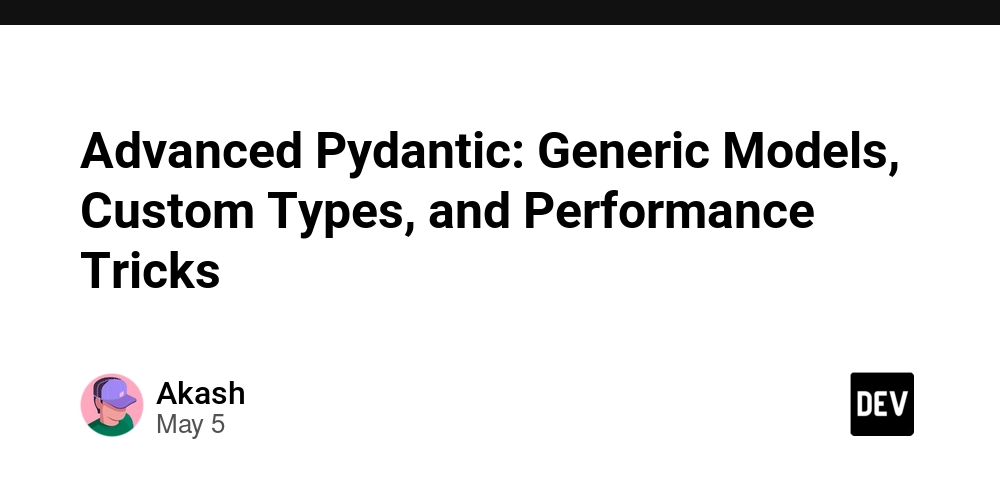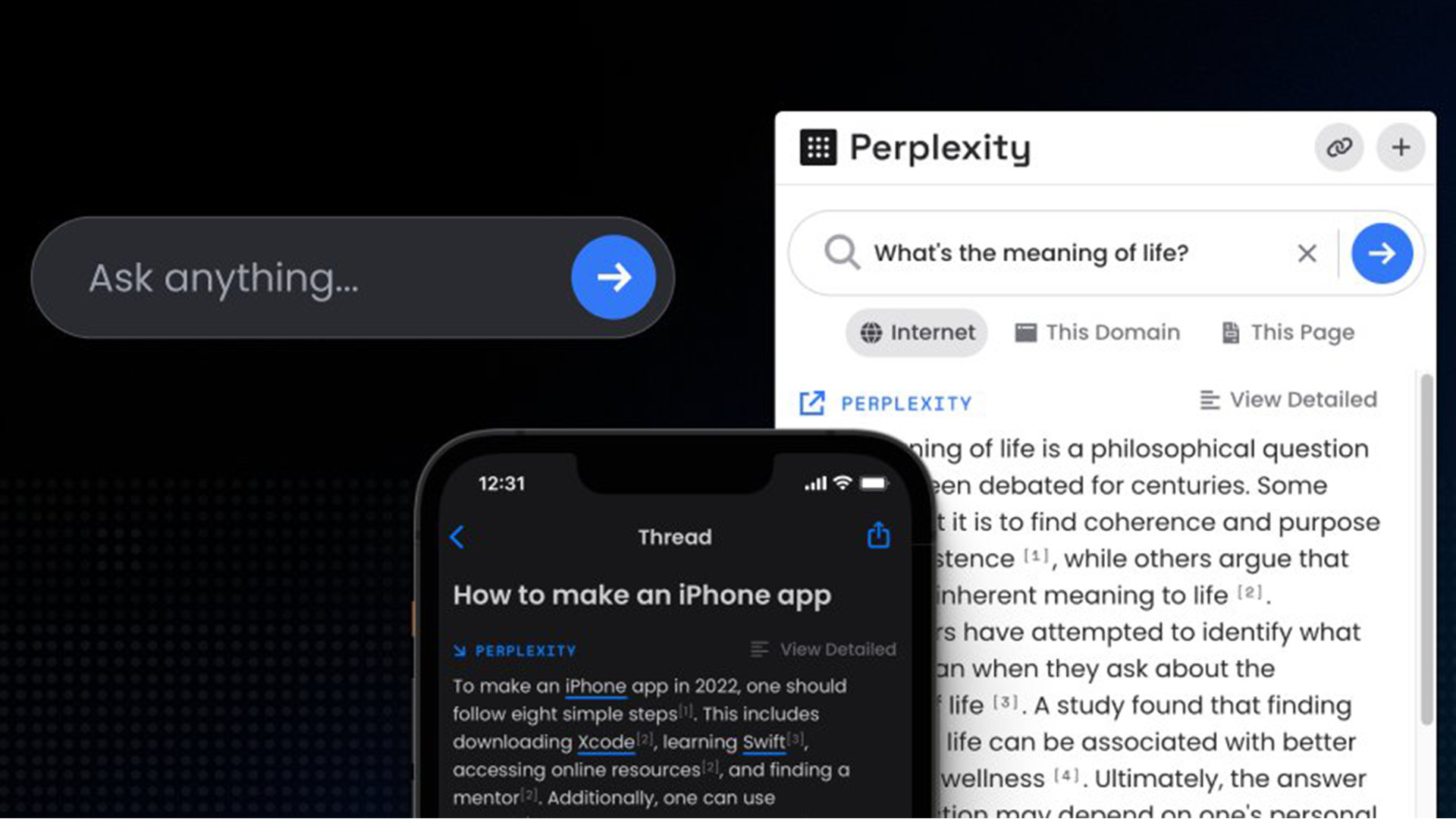Advanced Pydantic: Generic Models, Custom Types, and Performance Tricks
In the previous post, we integrated Pydantic with FastAPI and SQLAlchemy, building robust APIs and database interactions. Now, in the final post of our series, we’ll explore advanced Pydantic techniques to make your applications more flexible, performant, and maintainable. From generic models for reusable schemas to custom types for domain-specific validation, configuration management with BaseSettings, and performance optimizations, these tools are designed for scalable, production-ready systems. Whether you’re building reusable API wrappers, managing environment configs, or optimizing high-throughput parsing, this post has you covered. Let’s dive into Pydantic’s most powerful features! Creating Generic Models Pydantic’s GenericModel enables reusable, type-safe container models, perfect for patterns like paginated API responses or status wrappers. By leveraging Python’s typing.Generic, you can define models that work with any data type. Here’s an example of a generic ApiResponse model for wrapping API results: from pydantic import BaseModel, GenericModel from typing import Generic, TypeVar, List T = TypeVar("T") class ApiResponse(GenericModel, Generic[T]): status: str data: T message: str | None = None class User(BaseModel): username: str email: str # Usage with different types user_response = ApiResponse[User]( status="success", data=User(username="alice", email="alice@example.com") ) list_response = ApiResponse[List[User]]( status="success", data=[User(username="bob", email="bob@example.com")] ) print(user_response.data.username) # alice Use cases include paginated results (ApiResponse[List[T]]), search filters, or error wrappers. Generic models ensure type safety and reusability across endpoints. Defining Custom Field Types Pydantic supports custom field types using Annotated (or constr in V1) for constraints or by subclassing built-in types for business-specific validation. This is ideal for types like HexColor, Slug, or PositiveDecimal. Here’s a custom HexColor type: from pydantic import BaseModel, ValidationError import re class HexColor(str): regex = re.compile(r"^#[0-9a-fA-F]{6}$") @classmethod def __get_validators__(cls): yield cls.validate @classmethod def validate(cls, value: str) -> str: if not cls.regex.match(value): raise ValueError("Invalid hex color format") return value class Theme(BaseModel): primary_color: HexColor secondary_color: HexColor # Usage theme = Theme(primary_color="#FF0000", secondary_color="#00FF00") print(theme.primary_color) # #FF0000 try: Theme(primary_color="invalid") except ValidationError as e: print(e) # Invalid hex color format For simpler constraints, use Annotated: from typing import Annotated from pydantic import BaseModel, StringConstraints Slug = Annotated[str, StringConstraints(pattern=r"^[a-z0-9-]+$")] class Article(BaseModel): slug: Slug article = Article(slug="my-article") Custom types encapsulate domain logic, making models more expressive and reusable. Managing Configuration with BaseSettings Pydantic’s BaseSettings class is designed for managing application configurations, supporting .env files, type coercion, and nested settings. It’s perfect for Twelve-Factor apps or handling secrets. from pydantic import BaseSettings, ConfigDict, PostgresDsn from typing import Dict class AppConfig(BaseSettings): app_name: str = "MyApp" debug: bool = False database_url: PostgresDsn feature_flags: Dict[str, bool] = {} model_config = ConfigDict( env_file=".env", env_file_encoding="utf-8", env_prefix="APP_" ) # Example .env file: # APP_DATABASE_URL=postgresql://user:pass@localhost:5432/db # APP_DEBUG=true config = AppConfig() print(config.database_url) # postgresql://user:pass@localhost:5432/db print(config.debug) # True BaseSettings automatically loads environment variables, coerces types, and supports nested configurations, making it ideal for managing database URLs, API keys, or feature toggles. Model Performance and Optimization For high-throughput applications, Pydantic offers optimization techniques like model_construct() for bypassing validation, model_copy() for efficient updates, and model_dump() for controlled serialization. Here’s an example using model_construct() when validation is unnecessary: from pydantic import BaseModel class User(BaseModel): username: str email: str # Slow: validates data user = User(username="alice", email="alice@example.com") # Fast: skips validation user = User.model_construct(username="alice", email="alice@example.com") Use model_copy() for updates without re-parsing: updated_user = user.model_copy(update={"email": "alice@new.com"}) For serialization, model_dump() with exclude_unset=True reduces payload size: class User(BaseModel):

In the previous post, we integrated Pydantic with FastAPI and SQLAlchemy, building robust APIs and database interactions. Now, in the final post of our series, we’ll explore advanced Pydantic techniques to make your applications more flexible, performant, and maintainable. From generic models for reusable schemas to custom types for domain-specific validation, configuration management with BaseSettings, and performance optimizations, these tools are designed for scalable, production-ready systems. Whether you’re building reusable API wrappers, managing environment configs, or optimizing high-throughput parsing, this post has you covered. Let’s dive into Pydantic’s most powerful features!
Creating Generic Models
Pydantic’s GenericModel enables reusable, type-safe container models, perfect for patterns like paginated API responses or status wrappers. By leveraging Python’s typing.Generic, you can define models that work with any data type.
Here’s an example of a generic ApiResponse model for wrapping API results:
from pydantic import BaseModel, GenericModel
from typing import Generic, TypeVar, List
T = TypeVar("T")
class ApiResponse(GenericModel, Generic[T]):
status: str
data: T
message: str | None = None
class User(BaseModel):
username: str
email: str
# Usage with different types
user_response = ApiResponse[User](
status="success",
data=User(username="alice", email="alice@example.com")
)
list_response = ApiResponse[List[User]](
status="success",
data=[User(username="bob", email="bob@example.com")]
)
print(user_response.data.username) # alice
Use cases include paginated results (ApiResponse[List[T]]), search filters, or error wrappers. Generic models ensure type safety and reusability across endpoints.
Defining Custom Field Types
Pydantic supports custom field types using Annotated (or constr in V1) for constraints or by subclassing built-in types for business-specific validation. This is ideal for types like HexColor, Slug, or PositiveDecimal.
Here’s a custom HexColor type:
from pydantic import BaseModel, ValidationError
import re
class HexColor(str):
regex = re.compile(r"^#[0-9a-fA-F]{6}$")
@classmethod
def __get_validators__(cls):
yield cls.validate
@classmethod
def validate(cls, value: str) -> str:
if not cls.regex.match(value):
raise ValueError("Invalid hex color format")
return value
class Theme(BaseModel):
primary_color: HexColor
secondary_color: HexColor
# Usage
theme = Theme(primary_color="#FF0000", secondary_color="#00FF00")
print(theme.primary_color) # #FF0000
try:
Theme(primary_color="invalid")
except ValidationError as e:
print(e) # Invalid hex color format
For simpler constraints, use Annotated:
from typing import Annotated
from pydantic import BaseModel, StringConstraints
Slug = Annotated[str, StringConstraints(pattern=r"^[a-z0-9-]+$")]
class Article(BaseModel):
slug: Slug
article = Article(slug="my-article")
Custom types encapsulate domain logic, making models more expressive and reusable.
Managing Configuration with BaseSettings
Pydantic’s BaseSettings class is designed for managing application configurations, supporting .env files, type coercion, and nested settings. It’s perfect for Twelve-Factor apps or handling secrets.
from pydantic import BaseSettings, ConfigDict, PostgresDsn
from typing import Dict
class AppConfig(BaseSettings):
app_name: str = "MyApp"
debug: bool = False
database_url: PostgresDsn
feature_flags: Dict[str, bool] = {}
model_config = ConfigDict(
env_file=".env",
env_file_encoding="utf-8",
env_prefix="APP_"
)
# Example .env file:
# APP_DATABASE_URL=postgresql://user:pass@localhost:5432/db
# APP_DEBUG=true
config = AppConfig()
print(config.database_url) # postgresql://user:pass@localhost:5432/db
print(config.debug) # True
BaseSettings automatically loads environment variables, coerces types, and supports nested configurations, making it ideal for managing database URLs, API keys, or feature toggles.
Model Performance and Optimization
For high-throughput applications, Pydantic offers optimization techniques like model_construct() for bypassing validation, model_copy() for efficient updates, and model_dump() for controlled serialization.
Here’s an example using model_construct() when validation is unnecessary:
from pydantic import BaseModel
class User(BaseModel):
username: str
email: str
# Slow: validates data
user = User(username="alice", email="alice@example.com")
# Fast: skips validation
user = User.model_construct(username="alice", email="alice@example.com")
Use model_copy() for updates without re-parsing:
updated_user = user.model_copy(update={"email": "alice@new.com"})
For serialization, model_dump() with exclude_unset=True reduces payload size:
class User(BaseModel):
username: str
email: str | None = None
user = User(username="bob")
print(user.model_dump(exclude_unset=True)) # {'username': 'bob'}
These techniques are critical for performance-sensitive APIs or batch processing.
Comparing Pydantic V1 and V2
Pydantic V2, a core rewrite, offers significant performance improvements and new syntax. Key differences:
- Performance: V2 is faster due to Rust-based validation.
-
Syntax:
Configclass replaced byConfigDict;orm_modenowfrom_attributes; new@field_validatorand@model_validator. -
Deprecations:
.dict()replaced by.model_dump(); stricter alias handling.
Migration tip: Use pydantic.v1 compatibility module for gradual upgrades. For example:
from pydantic.v1 import BaseModel # V1 compatibility in V2
V2’s cleaner API and speed make it worth the migration for new projects.
Designing for Maintainability
To keep Pydantic models scalable:
-
Group by Domain: Organize models into modules (e.g.,
models/user.py,models/blog.py). -
Shared Config: Use
ConfigDictfor consistent settings across models:
class BaseModelWithConfig(BaseModel):
model_config = ConfigDict(
extra="forbid",
from_attributes=True
)
class User(BaseModelWithConfig):
username: str
- Avoid Overloading: Use separate models for create, update, and read operations instead of a single model.
- Test Validators: Isolate custom logic in functions for unit testing.
These practices ensure clarity and ease of maintenance.
Recap and Takeaways
This post explored Pydantic’s advanced features for scalable applications:
- Generic models enable reusable, type-safe schemas.
- Custom types encapsulate domain-specific validation.
-
BaseSettingsstreamlines configuration management. - Optimization techniques like
model_construct()boost performance. - V2 offers significant improvements over V1.
- Maintainable design keeps models organized and purpose-specific.
Pydantic’s extensibility makes it a cornerstone for robust Python systems.
Closing the Series
Across this five-post series, we’ve journeyed from Pydantic’s basics—type validation and nested models—to advanced integrations with FastAPI, SQLAlchemy, and scalable techniques. You’ve learned how to build declarative, type-safe models, handle complex APIs, and optimize performance. To deepen your knowledge, explore the Pydantic documentation, contribute to the open-source project, or experiment with real-world use cases. Check out our GitHub repo for code samples and a Pydantic cheat sheet. Thank you for joining us—happy coding!








































































































































































![[The AI Show Episode 145]: OpenAI Releases o3 and o4-mini, AI Is Causing “Quiet Layoffs,” Executive Order on Youth AI Education & GPT-4o’s Controversial Update](https://www.marketingaiinstitute.com/hubfs/ep%20145%20cover.png)
























































































































































































































































































































































































![Apple Shares Official Teaser for 'Highest 2 Lowest' Starring Denzel Washington [Video]](https://www.iclarified.com/images/news/97221/97221/97221-640.jpg)

![Under-Display Face ID Coming to iPhone 18 Pro and Pro Max [Rumor]](https://www.iclarified.com/images/news/97215/97215/97215-640.jpg)
![New Powerbeats Pro 2 Wireless Earbuds On Sale for $199.95 [Lowest Price Ever]](https://www.iclarified.com/images/news/97217/97217/97217-640.jpg)




































































































